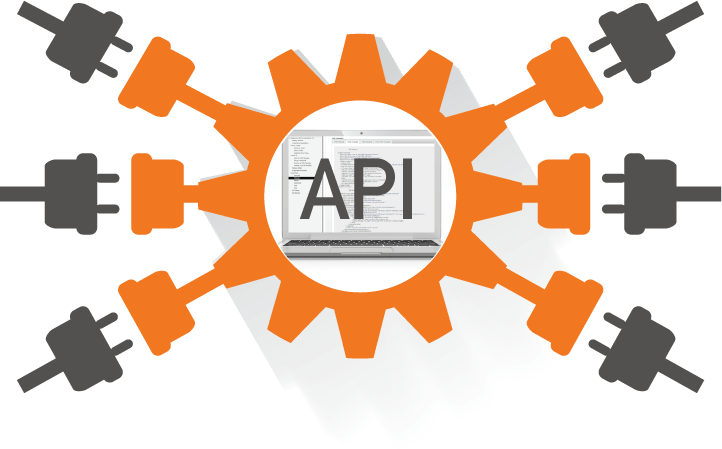APIs: The Building Blocks of Modern Web Applications
Hey Learner,
Welcome to the world of APIs, the essential ingredients that power the modern web! In this article, we’ll dive into the depths of APIs and explore their role as the building blocks that shape the applications we rely on daily. So, grab a cup of your favorite beverage and let’s get started!
Section 1: What are APIs?
APIs, or Application Programming Interfaces, are the gateways that enable communication between different software systems. They provide a set of protocols and standards that define how applications can exchange data and functionality. APIs are like the plumbing of the internet, connecting different applications and services to create a seamless user experience.
Section 2: The Benefits of Using APIs
APIs offer a plethora of benefits for developers and users alike. They promote rapid application development by providing pre-built functionality that can be easily integrated into existing systems. APIs also enhance scalability and flexibility, allowing applications to adapt to changing user needs. Additionally, APIs foster innovation by encouraging developers to create new applications and services that leverage existing APIs.
Section 3: Types of APIs
The API landscape is vast and diverse, with different types tailored to specific needs. Here are a few common categories:
- Public APIs: Open to all developers, these APIs provide access to data and services from third-party providers.
- Private APIs: Designed for internal use, these APIs are typically used within organizations to facilitate collaboration between different teams.
- Partner APIs: Created for specific partner relationships, these APIs enable businesses to share data and functionality with selected partners.

Source medium.com
Section 4: Uses of APIs
APIs have countless applications across various industries. Here are some common use cases:
- E-commerce: APIs power online shopping platforms by enabling secure payment processing, inventory management, and real-time shipping updates.
- Social Media: APIs allow social media applications to connect users, share content, and access third-party services like photo editors and analytics tools.
- Cloud Computing: APIs facilitate seamless integration between cloud-based services, such as storage, compute, and database management.
Section 5: API Design Best Practices
Crafting well-designed APIs is crucial for their effectiveness. Here are some best practices to consider:
- Clear Documentation: Provide comprehensive documentation that clearly explains the API’s purpose, endpoints, parameters, and response formats.
- User-friendly Design: Design APIs with a user-centric approach, ensuring ease of use and discoverability.
- Security Measures: Implement robust security measures to protect data and prevent unauthorized access.
Section 6: The Future of APIs
As technology continues to evolve, APIs will play an increasingly vital role in connecting systems, enabling automation, and fostering innovation. The future holds exciting possibilities for API development, including:
- Artificial Intelligence: APIs will facilitate the integration of AI-powered services into web applications, enhancing user experiences and driving automation.
- API Orchestration: Tools will emerge to simplify the management and coordination of multiple APIs, reducing complexity and improving efficiency.
- API Security: Enhanced security measures will be developed to address emerging threats and ensure the protection of sensitive data.
Conclusion
APIs are the backbone of modern web applications, providing the foundation for communication, data exchange, and functionality. They empower developers to create innovative solutions, enhance user experiences, and drive digital transformation. Keep exploring this vast and ever-evolving world of APIs, Learner! Don’t forget to check out our other articles for more in-depth insights into the fascinating realm of technology.
FAQ about APIs: The Building Blocks of Modern Web Applications
What are APIs?
Answer: APIs (Application Programming Interfaces) are sets of protocols and routines that allow different software components to communicate and exchange data. They act as intermediaries, defining how data is shared and accessed between applications.
How do APIs work?
Answer: APIs provide a standardized interface that enables software programs to interact with each other, regardless of their programming language or operating system. They function as messengers, carrying requests and responses between the two applications.
What are the different types of APIs?
Answer: APIs come in various types, including RESTful APIs (which use HTTP requests), SOAP-based APIs (using XML), and GraphQL APIs (offering flexibility in data retrieval).
What’s the difference between an API and a web service?
Answer: An API is a set of specifications for data exchange, while a web service is an actual application that implements the API. APIs define how data is exchanged, and web services execute the data exchange process.
Why are APIs essential for modern web applications?
Answer: APIs enable seamless integration and communication between different systems and applications, facilitating data sharing, functionality expansion, and enhanced user experiences.
What are the benefits of using APIs?
Answer: APIs offer numerous benefits, including improved interoperability, increased efficiency, reduced development time, and access to a wider range of services and data.
How do I use APIs?
Answer: To use APIs, you need to have an API key or authorization token provided by the API provider. Once authorized, you can send API requests using programming languages or API client libraries.
What are API best practices?
Answer: Best practices for using APIs include using authentication and authorization mechanisms, handling errors and exceptions, versioning APIs, and following API documentation.
What are some popular API examples?
Answer: Some popular APIs include Google Maps API, Twitter API, Amazon Web Services (AWS) API, and the PayPal API.
How can I learn more about APIs?
Answer: You can find resources, tutorials, and documentation on API development platforms like Swagger, Postman, and RapidAPI.
Video Suggestions About : APIs: The Building Blocks of Modern Web Applications
